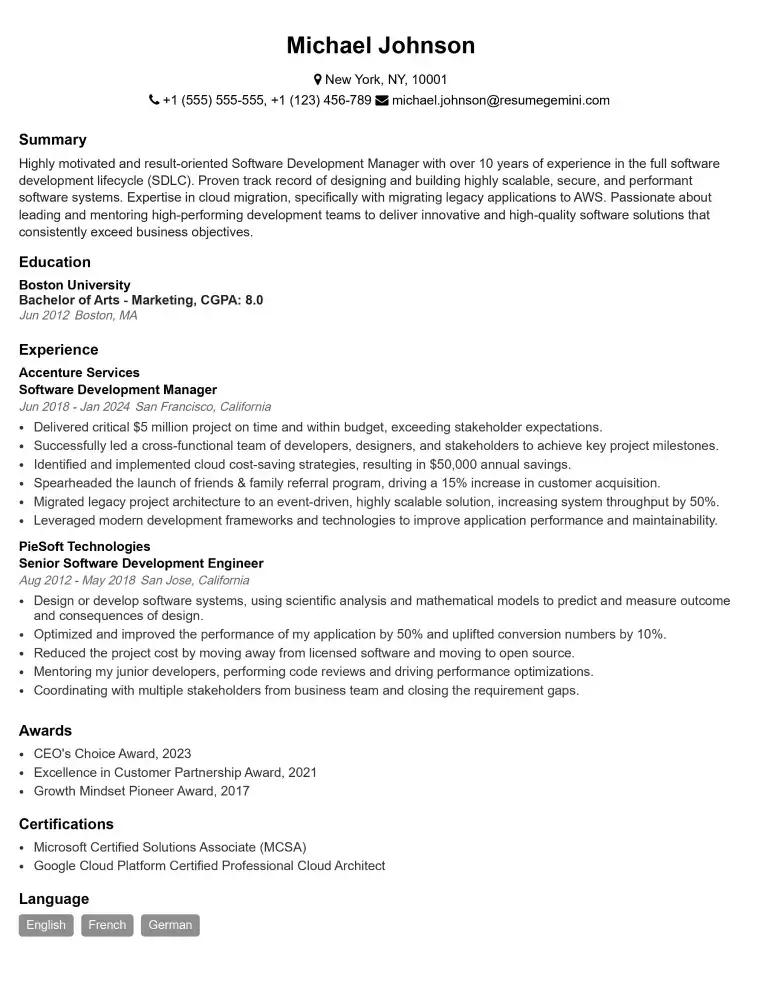In Canada, where both English and French are official languages, bilingualism is a highly sought-after skill. If you’re a job seeker with proficiency in both languages, creating a bilingual resume can significantly boost your chances of landing your dream job.
Highlight Your Language Proficiency
The first step in creating a bilingual resume is to prominently highlight your language proficiency. You can do this by including a separate section dedicated to languages, where you list both English and French (or any other languages you speak).
For each language, indicate your level of proficiency using standardized language proficiency scales, such as the Common European Framework of Reference for Languages (CEFR). This will provide potential employers with a clear understanding of your language abilities.
Customize Your Resume
Tailoring your resume to the specific job and industry you’re applying for is crucial. This means highlighting the skills and experience that are most relevant to the position. When customizing your bilingual resume, consider the following tips:
Use Relevant Keywords
When it comes to keyword optimization, the Canadian job market has its own unique set of requirements. Here are some tips for incorporating relevant keywords into your bilingual resume:
Consider Professional Translation
If you’re not confident in your ability to translate your resume into French (or any other language), consider hiring a professional translator. A qualified translator can ensure that your resume is accurately and effectively translated, preserving its meaning and impact.
Once your bilingual resume is complete, don’t forget to preview it on ResumeGemini to see how it looks and make any necessary adjustments before submitting it to potential employers.
Career Expert Tips:
- Select the ideal resume template to showcase your professional experience effectively.
- Master the art of resume writing to highlight your unique qualifications and achievements.
- Checkout the resume writing tips for guidance and best practices.
- Make your 2025 brighter with a new job. Build a powerful resume with ResumeGemini and save big, enjoy exclusive discounts on premium templates.
Frequently Asked Questions (FAQ’s)
Why is it important to have a bilingual resume in Canada?
Bilingualism is a crucial asset in the Canadian job market, where both English and French are official languages. It demonstrates your ability to communicate effectively with a broader audience, making you a valuable candidate for employers seeking to connect with diverse clientele. Moreover, Canada’s commitment to promoting linguistic duality provides ample opportunities for bilingual individuals in various sectors.
How do I highlight my language proficiency on my resume?
Highlight your language proficiency by including a language section that clearly states your fluency level in both English and French. Use recognized proficiency scales like the Canadian Language Benchmarks (CLB) or the Common European Framework of Reference for Languages (CEFR) to quantify your abilities. If you hold certifications such as TEF or DELF, mention them to provide tangible proof of your proficiency.
What are some common mistakes to avoid when writing a bilingual resume?
Avoid direct translation of your resume from one language to another. Instead, tailor your resume to each language to reflect the unique nuances and cultural expectations of the target audience. Ensure consistency in your language usage throughout the document, avoiding mixing English and French within the same section. Additionally, proofread your resume carefully for any grammatical or spelling errors, as they can detract from your professionalism.
How can I tailor my resume to the Canadian job market?
Research the specific industry and region you’re targeting in Canada. Familiarize yourself with the job market trends, common resume formats, and preferred keywords used by employers. Incorporate keywords relevant to your target positions and industries to optimize your resume for Applicant Tracking Systems (ATS) used by many Canadian companies. Highlight your understanding of Canadian work culture, including customs like addressing employers formally and using appropriate salutations.
What are the key sections to include in a Canadian resume?
A Canadian resume typically includes the following sections: Contact information, resume summary or objective, work experience, education, skills, awards and recognition, certifications, languages, and references. While the work experience and education sections remain essential, Canadian resumes often place more emphasis on skills and accomplishments relevant to the specific job you’re applying for. Consider adding a “Professional Affiliations” section to showcase your involvement in industry organizations or associations.
What are some tips for writing a strong resume summary as a bilingual candidate?
Craft a compelling resume summary that effectively showcases your bilingual abilities and value proposition. Quantify your accomplishments whenever possible to demonstrate the impact of your bilingualism in your previous roles. Use action verbs and industry-specific keywords to highlight your skills and make your summary stand out to potential employers. Keep your summary concise, typically around 2-3 sentences, and tailor it to each job application to emphasize how your bilingualism aligns with the specific role and company requirements.
Next Step:
To create a bilingual resume that will captivate employers in the Canadian job market, visit ResumeGemini. Our platform offers a range of bilingual resume templates and pre-built resume samples to guide you in crafting a standout resume. With ResumeGemini, you can easily highlight your language proficiency, tailor your resume to Canadian standards, and confidently present your bilingual capabilities to potential employers.
- Top 50 Most Common Interview Questions
- The Psychology of a Great Resume: Hacks to Impress Recruiters
- What Mistakes to Avoid When Writing a Resume: A Comprehensive Guide
- Elevate Your Career with Expert Resume Building: Introducing ResumeGemini
- How to Write a Resume Using Google Gemini: Step-by-Step Guide
